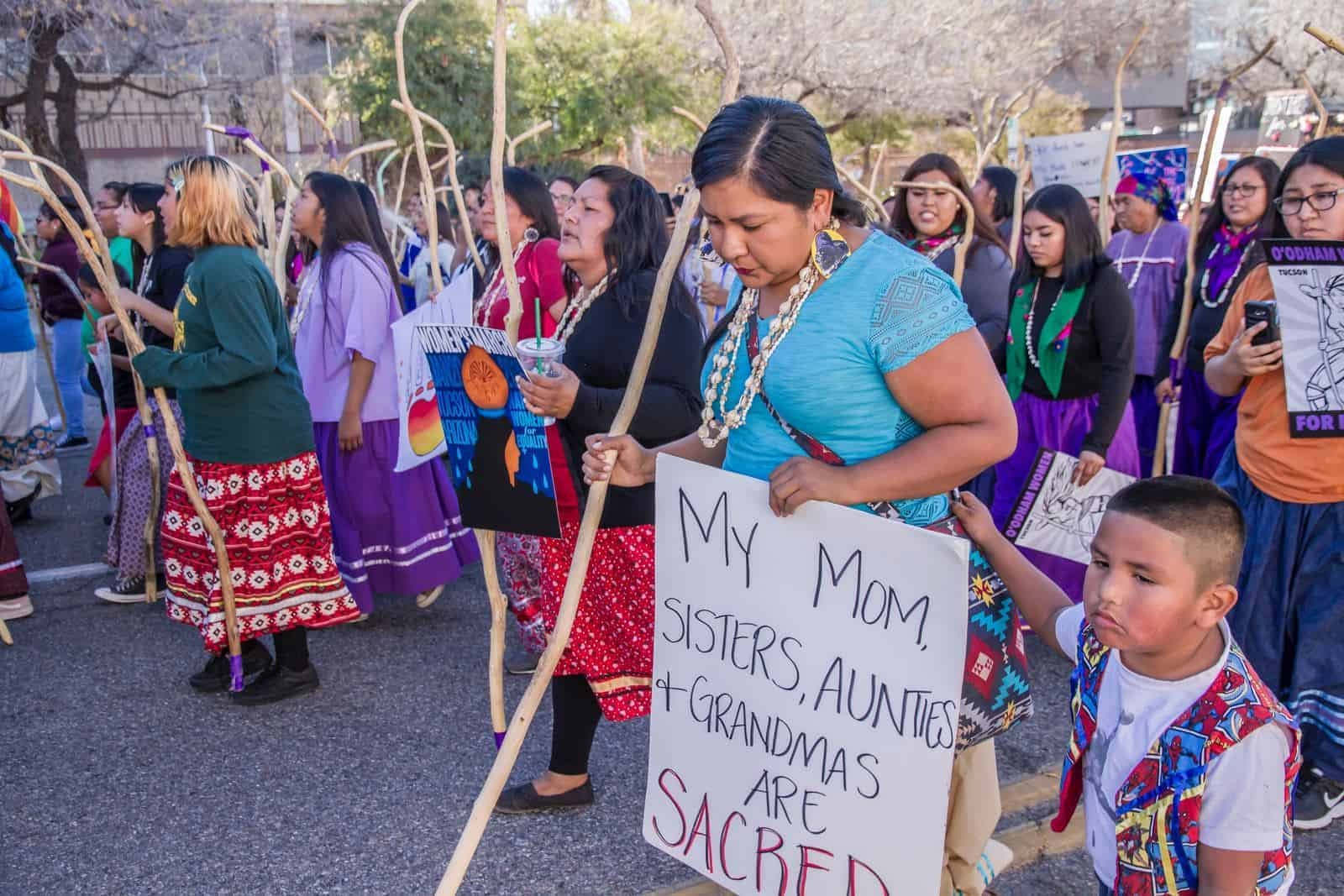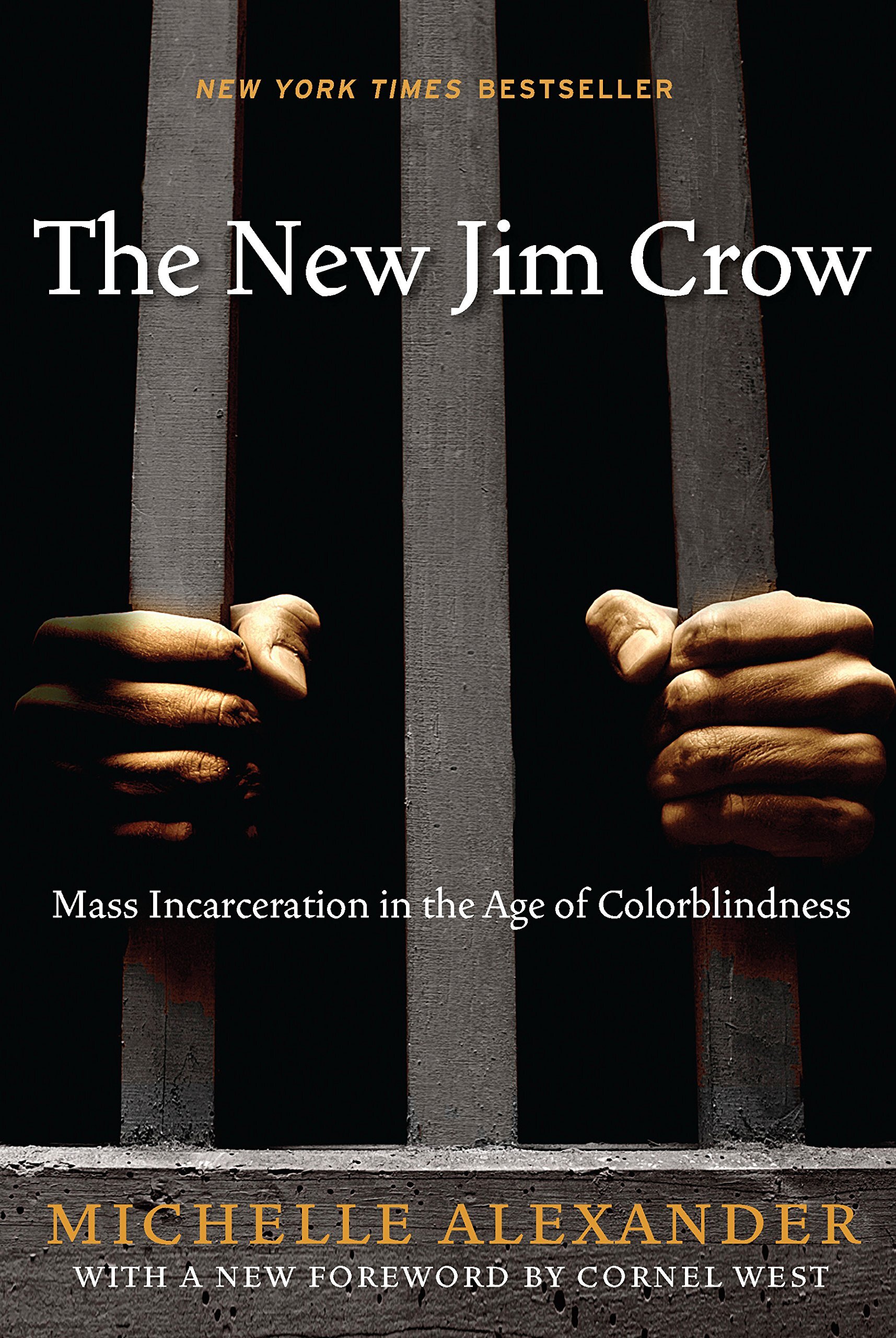Anti-Racism Resource Guide
Here you will find resource guides on various topics. We encourage you to explore!
December
The theme for December is racism and Native Americans. Today in the United States there are over 500 federally-recognized tribes and over 5 million Native Americans. Native Americans have long been the subject of stereotypes. The trope of the fierce Indian is common in sports—from the Cleveland Indians to the Atlanta Braves to the recently renamed Washington Redskins. Not only are Native Americans stereotyped, but they have the highest poverty rate among all minority groups and the lowest level of educational attainment.
This month’s recommendations begin with Roxanne Dunbar-Ortiz’s book, An Indigenous Peoples’ History of the United States. Winner of the American Book Award, this is a history of the United States that focuses on federal policies to seize Native American territory and displace or eliminate the original inhabitants. David Treuer’s The Heartbeat of Wounded Knee: Native America from 1890 to the Present, was a National Book Award finalist. It offers a challenge to the myth of the “vanishing Indian,” describing the importance of World War II, urban migration, casinos, and the computer age in reshaping modern Native American life. The New York Times said it is “An informed, moving, and kaleidoscopic portrait of Indian survival, resilience, adaptability, pride and place in modern life.” Treuer is also the author of an interesting article that appeared in the May 2021 issue of The Atlantic, “Return the National Parks to the Tribes.” It describes how a number of national parks were created only after Native Americans were removed forcibly, sometimes by an invading army and sometimes by treaties that were signed under duress. He claims that returning these land to Native control would be good not just for Native Americans, but for the parks as well. The final recommendation is a short article titled, “Racial Wealth Snapshot: American Indians/Native Americans.” It provides an overview of native American living patterns and economic status.
November
The November recommendations are about the race-based divide in wealth in the United States. Depending on the year and on whether mean or median household incomes are measured, the typical white household has a net worth of six to ten times the net worth of the typical Black household. Moreover, a 2018 study published by the Federal Reserve Bank of Minneapolis concluded that “[t]he historical data also reveal that no progress has been made in reducing income and wealth inequalities between black and white households over the last 70 years.” This large and persistent wealth gap follows from centuries of discriminatory policies that have systematically limited Black Americans’ ability to build, maintain, and pass on wealth.
An excellent post on the Brookings Institution website, “Examining the Black-White Wealth Gap,” explains wealth statistics in a detailed but clear way and offers some reasons why white families are so much wealthier than Black families—even when families with the same incomes are compared. A post in the Harvard Gazette, “Racial Wealth Gap May be a Key To Other Inequalities,” describes how wealth and income inequality has reduced educational opportunities and upward mobility for people of color. The Samuel Dubois Cook Center on Social Equity at Duke University published a report titled, “What We Get Wrong About Closing the Racial Wealth Gap.” The report examines ten myths about how the racial wealth gap could be closed, including greater educational attainment by Blacks, more home ownership, higher savings rates, and improved financial literacy. The authors conclude that while these steps would be desirable, they are inadequate to close the wealth gap. “Blacks cannot close the racial wealth gap by changing their behavior…if the structural sources of racial inequality remain unchanged.”
The final recommendation for November is a YouTube video. It is the ninth installment in a series of videos about racism and the economy sponsored by the twelve Federal Reserve Banks, and it is about the racial wealth divide. After an introduction by the President of the Federal Reserve Bank of Atlanta, a panel of speakers discusses the policies and institutions that contribute to persistent wealth disparities. They are then joined by additional speakers for a discussion of the bold policies that are required to reduce the wealth gap.
October
The theme of this month’s recommendations is racism and health care. Unlike previous recommendations, these are mainly articles rather than books. For a brief overview, start with a post from the Centers for Disease Control and Prevention (CDC), which earlier this year declared that racism is a serious health threat. The posting points out that Black Americans experience a higher rate of illness and death across a wide range of health conditions, including diabetes, hypertension, obesity, asthma, and heart disease, and that the life expectancy of Blacks is four years lower than that of whites. One reason for this is that black Americans have less access to health care. Jamila Taylor’s article, “Racism, Inequality, and Health Care for African Americans,” explains that Blacks are almost twice as likely as whites to be uninsured, that the refusal of most southern states to expand Medicaid coverage has disproportionately affected blacks, and that due to residential segregation, Black neighborhoods are more likely to lack hospitals and other health care providers. Several studies have concluded that when Black people do receive health care—even where insurance coverage, income, age, and severity of conditions are comparable—Blacks receive lower quality health care than whites. Khiara Bridges suggests in her article, “Implicit Bias and Racial Disparities in Health Care,” that this is due to implicit or unconscious biases held by health care providers. In doing so she cites and agrees with GW Law Professor Danya Bowen Matthew’s dense academic book, Just Medicine: A Cure for Racial Inequality in American Healthcare.
Black infants are almost twice as likely to die as white infants, and Black women are three to four times likely to die from pregnancy-related causes as their white counterparts. An excellent New York Times article by Linda Villarosa explores this issue in detail. She writes that, “For black women in America, an inescapable atmosphere of societal and systemic racism can create a kind of toxic physiological stress, resulting in conditions—including hypertension and pre-eclampsia—that lead directly to higher rates of infant and maternal death.”
September
Contemporary fiction by Black authors can provide readers with insights and perspectives on race and racism in ways that nonfiction cannot by allowing the reader to see with new eyes and feel with a different heart. This month’s suggested readings are all works of fiction set in the present day United States. Zakiya Harris’s The Other Black Girl is a thought provoking thriller that explores racism and privilege at a prestigious publishing house (although it could easily have been set in a law firm, a bank, a tech firm, or many other workplaces). A New York Times bestseller, Amazon named it Best Book of June 2021. The Office of Historical Corrections consists of a novella and six short stories. The author, Danielle Evans, teaches at Johns Hopkins and has won numerous literary prizes. One reviewer noted that Evans’s stories provide “important nuanced perspective from a writer of color, which deepened my understanding of big issues, but also daily experiences and indignities that don’t make the news.” Angie Thomas’s The Hate U Give is about the fallout after a black teenager witnesses a police shooting of her best friend. Another New York Times bestseller, the book was made into a critically acclaimed movie that is available on Netflix.
August
The recommended readings for this month focus on housing discrimination. Racially segregated housing continues to influence school segregation, disparities in policing and health care, and the huge racial wealth gap, yet many people do not understand how pervasive housing segregation is. Even more concerning, a recent study found that 81 percent of metropolitan areas in the United States with more than 200,000 residents were more segregated in 2019 than they were in 1990.
Start with an article that provides some local context. In “Being Black lowers the value of my home: The legacy of redlining,” Washington Post writer Michelle Singletary explains that her suburban home in predominately Black Prince George’s County would be worth at least 40% more if it were in a white subdivision. The most important book on this subject is Richard Rothstein’s widely acclaimed The Color of Law. Rothstein shows that segregated housing is not primarily the result of private decisions, but of explicit local, state, and federal government policies, including discriminatory zoning, taxation, subsidies, and explicit redlining. The Fair Housing Act of 1968 was designed to remedy this. Abdallah Fayyad’s article, “The Unfulfilled Promise of the Fair Housing Act,” provides a brief explanation of how the law’s requirement that the federal government affirmatively further fair housing has been derailed.
July
Implicit or unconscious bias is our theme for July. A good starting point is a short article by Kendra Cherry, “How Does Implicit Bias Influence Behavior?” The article explains what causes implicit bias, describes some of its effects, and provides suggestions for reducing implicit bias. Following that introduction to implicit bias, watch a TEDx talk by Jennefer Witter, “How Prejudiced Are You? Recognizing and Combating Unconscious Bias.” She explains how we absorb information from our culture and project preconceptions onto others and provides some very compelling examples. She also provides recommendations about how we can recognize and fight implicit bias. If you are interested in learning more, one of the leading books on implicit bias is Stanford Professor Jennifer Eberhardt’s Biased: Uncovering the Hidden Prejudice That Shapes What We See, Think and Do. According to Eberhardt, “Implicit bias is a kind of distorting lens that’s a product of both the architecture of the brain and the disparities in our society.” Among other things, Eberhardt summarizes decades of social psychology research and brings those studies to life by using stories from her own experience. She also uses examples from her consulting work. She recounts the difficulties she faced in devising training programs for police departments designed to reduce racial disparities in policing, as well as work she has done for Airbnb and Nextdoor. In addition, she lays out strategies for reforming business practices, police departments, and our own day-to-day interactions.
June
The recommendations for June all focus on Washington, D.C. Black Georgetown Remembered was first published by Georgetown University Press in 1991, and was reissued and updated in 2016. The book describes the black community in Georgetown from colonial times to the present, revealing a great deal of hidden history, and is full of maps, illustrations, and historical photographs. The authors draw on oral interviews with past and current residents and extensive research into church and historical society archives. There is also an excellent companion video produced by Georgetown University Press in 2016. The second recommendation focuses on a different DC neighborhood — Eckington, now also known as NoMa. Merawi Gerima, the writer-director of the movie Residue, grew up in Eckington. In the movie a young screenwriter modeled on Gerima returns to Eckington to write a script based on his childhood and finds his old neighborhood totally transformed. The movie, which explores black culture, gentrification, and racism, is a New York Times Critic’s Pick and received a 93% rating on Rotten Tomatoes. It is available to watch on Netflix. The final recommendation for June is quite different from the previous ones. It is a 2017 study sponsored by the Urban Institute. With a minimum of commentary, the study documents striking inequalities in all parts of the DC region (Washington, DC; Montgomery and Prince Georges County, Maryland; and Arlington, Fairfax, Loudon, and Prince William County, Virginia) in education, income, and housing. For example, in the DC region the average household income for households headed by whites ($152,000) was 82% higher than for blacks, and the child poverty rate was 3% for white children compared to 19% for black children. In Washington, DC 27% of black children live in poverty.
May
The recommendations for this month focus on racism in the criminal justice system. Walter Isaacson’s interview of Bryan Stevenson following the death of George Floyd is an excellent starting point. Stevenson, the founder and Executive Director of the Equal Justice Initiative, talks about, among other things, police reform, the history of racism, and the need to acknowledge America’s history of racism. The New Jim Crow: Mass Incarceration in the Age of Colorblindness has been called one of the most influential books of the last twenty years. It describes racism throughout the criminal justice system, from lawmaking to policing to widespread legal discrimination against ex-prisoners in employment, housing, access to education and public benefits, and denial of the right to vote. The author argues that Jim Crow and racial segregation have been replaced by mass incarceration as “a system of social control.” Bryan Stevenson’s award winning best-seller, Just Mercy, examines the criminal justice system through multiple stories, including an extended story about a black man sentenced to death for a crime he did not commit. Just Mercy is the basis for a 2019 movie by the same name starring Michael B. Jordan.
April
The suggested materials for April focus on the Bible and racism. Timothy Keller’s article, “The Sin of Racism,” provides a brief summary of why racism is a sin, with numerous examples from both the Old and New Testaments. He concludes by urging his readers to “produce fruit in keeping with repentance” (Matthew 3:8). This month’s recommended book is Howard Thurman’s classic, Jesus and the Disinherited. Thurman was a spiritual adviser to Martin Luther King, Jr. and has been called one of the great preachers of the twentieth century. His interpretation of the Gospels is one of the foundations of the non-violent civil rights movement. Nancy Guthrie’s podcast series, Help Me Teach the Bible, includes an episode with two Presbyterian ministers, Irwyn Ince (Grace DC Presbyterian Church) and Sean Michael Lewis (Independent Presbyterian Church, Memphis). The conversation in this podcast is about how to apply the Bible to the sin of racism. They discuss a number of biblical passages, and point out the racial and ethnic diversity in the Bible.
March
This month we focus on racism and the church. Shaking the Gates of Hell, by Pulitzer Prize-winning journalist John Archibald, is about Archibald’s father, a Methodist minister in Alabama during the 1960s. The book examines how his father and the greater Christian church were mostly silent on issues of race during the turbulent years of the civil rights movement. AME Bishop Frank M. Reid is the subject of a wide-ranging interview in a Faith & Prejudice podcast. He discusses the black church, systemic racism, and the role Christians have in confronting systemic racism. Finally, Jemar Tisby is interviewed about his book, The Color of Compromise, in a short article that appears in Religion & Politics.
John Archibald, Shaking the Gates of Hell (Deckle Edge 2021), available here.
Faith & Prejudice, podcast with Bishop Frank M. Reid, Oct.26, 2020, available here.
Eric C. Miller, The American Church’s Complicity in Racism, Religion & Politics, April 2, 2019. Click here for link.
February
is Black History Month and the suggested resources for the month all have a historical theme. These Truths is Harvard history Professor Jill Lepore’s acclaimed one volume history of the United States, taking the reader from the 16th century to the 21st. At the core of the book is the contradiction between Jefferson’s “truths”—equality, natural rights, and the sovereignty of the people—and slavery and racism. The Warmth of Other Suns tells the story of the movement of African-Americans out of the south from 1915 to 1970, and it includes a general history and analysis of the entire period. Beginning in 1940 Jacob Lawrence painted sixty panels to depict the Great Migration. The Phillips Collection has an online exhibit that includes the 60 paintings, letters written by the migrants, maps, numerous interviews (including an interview of the artist), video, photos, and music. The movie Selma chronicles the three month period in 1965 when Martin Luther King, Jr. led the march from Selma to Montgomery and the Voting Rights Act was signed into law.
Book: Jill Lepore, These Truths: A History of the United States (2018). Available in hardcover, paperback, and on Kindle. Click here for link.
Book: Isabel Wilkerson, The Warmth of Other Suns; The Epic Story of America’s Great Migration (2011). Available in hardcover, paperback, and on Kindle. Click here for link.
Website: Jacob Lawrence, The Migration Series. Click here to check it out.
Movie: Selma (2014). Available on Hulu. Also will be shown on cable channel FX at 1 pm February 9 and at 1am February 10.
January
The recommendations for January are designed to give you a good grounding in the history of racism in the United States. If you missed it, Professor Rothman’s first presentation to Adult Ed is a good place to start. Brooke Gladstone’s podcast is a great next step. The recommended book for this month, Stamped, is a condensed version of Stamped from the Beginning, which won a National Book Award. If you want a more in depth treatment, read Ibram X. Kendi’s Stamped From The Beginning. Click on the Adult Ed presentation and the podcast for links to them; click on the book titles for links to short summaries.
Video: GPC Adult Ed Discussion, “Overview of Racism in America,” with Professor Adam Rothman. (October 4, 2020) Click here to watch. (password: learn)
Video: Brooke Gladstone, “The Worst Thing That We’ve Ever Done,” On the Media (June 1, 2018). Click here to watch.
Book: “Stamped: Racism, Anti-Racism and You,” by Ibram X. Kendi. Click here for link.
Book: Chris M. Asch and George D. Musgrove, “Chocolate City: A History of Race and Democracy in the Nation’s Capital,” (2017) Click here for link.


































